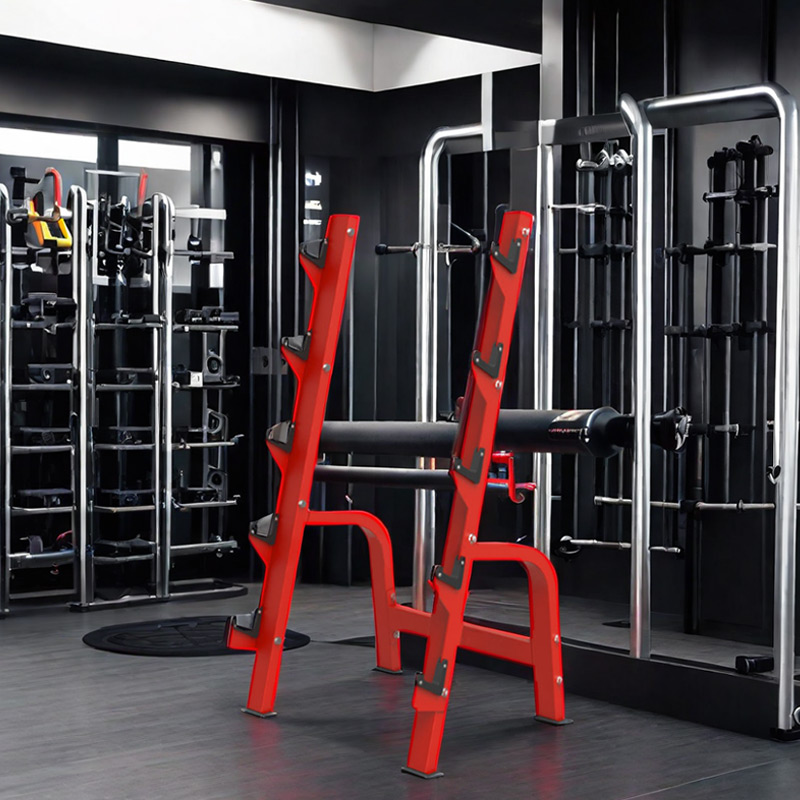A barbell rack is an essential piece of equipment used to organize and store barbells in gyms, fitness centers, and home workout spaces. It is designed to keep barbells safely stored and easily accessible for various strength training exercises. Here’s a detailed description of a typical barbell rack:
Features and Components:
- Design: Barbell racks are typically horizontal structures with multiple slots or pegs designed to hold barbells securely in place.
- Material: Constructed from sturdy materials such as heavy-duty steel or metal, ensuring durability and stability to support the weight of multiple barbells.
- Capacity: Designed to accommodate a range of barbell sizes and weights, from standard Olympic barbells (7 feet long, 20 kg) to smaller training bars and specialty bars.
- Storage Configuration: Depending on the model, barbell racks may feature:
- Horizontal Storage: Barbells are stored horizontally on pegs or slots aligned parallel to the ground.
- Vertical Storage: Some racks allow barbells to be stored vertically, which can save floor space and provide easy access.
- Padding or Protection: Some racks include padding or rubberized coatings on the pegs or slots to protect the barbells from scratches and damage.
- Mobility (optional): Larger or commercial-grade barbell racks may feature wheels or casters for easy mobility within a gym or workout area.
Benefits:
- Organization: Helps maintain a tidy workout area by keeping barbells organized and easily accessible.
- Safety: Ensures barbells are stored securely, reducing the risk of accidents or injuries caused by barbells left on the floor.
- Space Efficiency: Maximizes floor space by vertically storing barbells, especially in facilities with limited space.
Types of Barbell Racks:
- Standard Barbell Racks: Designed for holding standard Olympic barbells used in various exercises such as bench presses, squats, and deadlifts.
- Specialty Barbell Racks: Some racks are designed to accommodate specialty bars like curl bars, trap bars, or safety squat bars.
Maintenance Tips:
- Regular Inspection: Periodically check the rack for any signs of wear, loose bolts, or damage to ensure it remains stable and safe for use.
- Cleaning: Wipe down the rack regularly to remove dust, chalk, or debris that may accumulate over time.
- Weight Distribution: Distribute the weight evenly across the rack to prevent overloading and ensure stability.
A well-maintained barbell rack not only enhances the organization and safety of a workout space but also prolongs the lifespan of barbells by keeping them properly stored and protected. Whether in a commercial gym or a home gym setup, a barbell rack is an essential investment for any strength training regimen.

























































Reviews
There are no reviews yet.